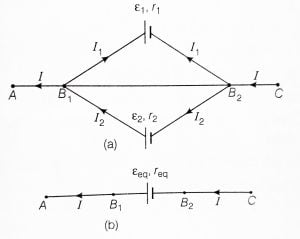RESISTOR COLOUR CODES
INTRODUCTION
In the world of electronics, Resistors are being highly used in every branch of electricity. It is a very important component of an electronic kit, without it, you can’t even charge your smartphone or any electrical gadgets.
Resistors are being used in an electrical circuit to minimize the flow of electric current to get the desired value of current. Having the property of resisting the flow of electric current. It is also used as a potential dropper in the circuit.
Different types of resistors are available in the market based on their use. It is available in a wide range of resistance values from fractions of an ohm to millions of ohms.
It is okay that the value of resistance ranges from fractions of an ohm to the millions of ohms but it is not okay that we have Resistors for every possible value of resistance such as 1Ω, 2Ω, 3Ω … nΩ. If we have Resistors for every possible value of resistance then the numbers of such Resistors would be infinite. So it is not possible to manufacture such large numbers of resistors.
So resistors are manufactured in what they are called “preferred value” in which their resistance value are printed on their body in colored ink. If the body of the resistors is big enough to read the print, like large power resistors. Then the resistance value, tolerance, and wattage rating are generally printed on the body of the resistor in the form of letters and numbers.
But all the resistors are not big enough like large power resistors so in this case, when the resistor is small such as a 1/4 watt carbon or film type, then their specifications are shown in another manner because if we print the specifications on their body then it would be too small to read.
So to get rid of this problem, small resistors contain colored painted bands to indicate their resistive and their tolerance value, and the physical size of the resistor indicates its wattage rating. These colored painted bands produce a system of identification generally known as a Resistors Colour Code.
So to identify the value of resistance and tolerance, an international and universally accepted resistor color code scheme was developed many years ago. This scheme provides a simple and fast way of identifying a resistor’s ohmic value no matter what is the size or external condition of the resistor. In this scheme, a set of individual colored rings or bands in spectral order have printed on the body of the resistor representing each colored ring or band a particular digit.
If we want to read the resistor color code markings then we have to take one band at a time and start reading it from left to the right. In the color code scheme, the larger width band is the tolerance band which is oriented to the right side of the resistors.
RESISTOR COLOR CODE CHART
Here, you can see the resistor color code chart of different band resistors. every colored ring is associated with a particular digit as you can see below.

RESISTOR COLOR CODES TABLE?
| COLOR | DIGIT | MULTIPLIER | TOLERANCE |
| BLACK | 0 | 100 | |
| BROWN | 1 | 101 | ± 1% |
| RED | 2 | 102 | ± 2% |
| ORANGE | 3 | 103 | |
| YELLOW | 4 | 104 | |
| GREEN | 5 | 105 | ± 0.5% |
| BLUE | 6 | 106 | ± 0.25% |
| VIOLET | 7 | 107 | ± 0.1% |
| GREY | 8 | 108 | ± 0.05% |
| WHITE | 9 | 109 | |
| GOLD | ± 5% | ||
| SILVER | ± 10% | ||
| NONE | ± 20% |
WEIGHTED POSITIONS OF DIFFERENT COLOR CODES
| No. of Colored Bands | 3 Coloured Bands | 4 Coloured Bands | 5 Coloured Bands | 6 Coloured Bands |
| 1st Band | 1st Digit | 1st Digit | 1st Digit | 1st Digit |
| 2nd Band | 2nd Digit | 2nd Digit | 2nd Digit | 2nd Digit |
| 3rd Band | Multiplier | Multiplier | 3rd Digit | 3rd Digit |
| 4th Band | – | Tolerance | Multiplier | Multiplier |
| 5th Band | – | – | Tolerance | Tolerance |
| 6th Band | – | – | – | Temperature Coefficient |
HOW TO READ RESISTOR COLOR CODE?
So in this section, we will see that how can we read a resistor color code for different bands. But going further, please read the following important tips, regarding reading color codes.
- Color codes are printed on the resistors such that color rings which give the significant digits and multiplier value are closer to each other and the first band is always nearer to the lead and the tolerance color rings such as gold and silver are present at the end of the right side.
- There is always a gap between main color rings and tolerance color rings.
- This gap gives the direction of reading color codes from left to right, main color rings are present at the left side of the resistor, and the tolerance rings are almost the right sides of the resistor. So always start reading codes from left to right sides.
- Always check the manufacturer’s documentation to be sure about the used color codes system. otherwise, for the best practice check the value of the resistor using a multimeter.
READING 3 BAND RESISTOR

In the three-band resistor color code, the first two rings are resistance values and the third ring is the multiplier. In the above resistor, you can clearly see that there is no tolerance ring. In any resistor, if there is no tolerance ring then it means it has a tolerance value of ± 20%.
so let’s find out that what is the value of its resistance?
you can see that the first band is yellow and the second band red, check out the resistance color code table and find what value is assigned for yellow and red, yellow has digit 4, and red has digit 2 and we know that the third ring for multiplier so, black has the multiplier 100 . Now, we have got all the value which is essential to giving the value resistance. The value of the resistance is 23 × 100 Ω, which is equal to 23Ω having a tolerance value of ± 20%.
READING 4 BAND RESISTOR
It is the most common variation of the resistor which can be easily found in any electronic shop. In this resistor first, two bands are for resistance value, the third band is for the multiplier, and the utmost fourth band is for the tolerance value. Most of the four band resistors have tolerances of 5%, 10%, and 20%.
so let’s find out that what is the value of its resistance?
The first band is green so as per the table it has a value of 5 and the second is red and it has the value of 2 and the third multiplier band is blue which have a value 106 and the fourth band is gold which has the tolerance value of ± 5%. So the value of its resistance is- 52 × 106Ω having a tolerance value of ± 5%.
READING 5 BAND RESISTOR

Five band resistors are special types of resistors having high precision value. It has an extra band to indicate the third significant digit, which means it has three bands for the resistance value. The fourth bands are for multiplier and the fifth band is for tolerance. Most five-band Resistors have a tolerance value of 1% or 2%.
So let’s find out that what is the value of its resistance?
In the above figure, the first three-color rings are brown, green, and red. As per the table, their significant digits are 1, 5, and 2. The fourth band is black, it is the multiplier band and the multiplier of black is 100 and the last fifth band is the tolerance band and it is gold in color and the tolerance of gold is ±5%. So the value of resistance of this resistor is 152 × 100Ω having a tolerance of ±5%.
READING 6 BAND RESISTOR

It is a high precision value resistor that has an additional ring for temperature coefficient (ppm/K) or sometimes it is for failure rate.
The most common color ring for temperature coefficient is brown which has a temperature coefficient of 100ppm/K. It means every rise of 10°C the value of resistance changes to 0.1%. If the temperature is critical, then some other colors are used to specify the temperature coefficient such as red, orange, and yellow.
So let’s find out that what is the value of its resistance?
In the above Resistors, the first three-band (brown, black, orange) is for the resistance value, the fourth band (red) is for the multiplier, the fifth band (yellow) is for tolerance and the last band (brown) is for temperature coefficient.
So as per the table, the significant digits of the first three-color rings are 1, 0, and 3. The multiplier of the fourth band i.e red is 102. The tolerance of the fifth band (yellow) is ±4% and the temperature coefficient of the last band (brown) is 100ppm/K. So the getting all the values, the resistance of the upper Resistor is 103 × 102 ±4% 100ppm/K.
MNEMONICS TO REMEMBER RESISTORS COLOR CODES
So we have now learned, how can we read Resistor’s color codes. We know that Resistor’s color codes table plays an important role in reading the color codes.
So it is necessary to remember the whole color code table in order to read color codes precisely. But it is not possible to remember as a whole without any tricks or any proper shortcut.
We can remember the resistor color code by using short, easily remembered sentences in the form of expressions, rhymes, and phrases which are called an acrostic.
In mnemonic, the first letter of each word matches each color which makes up the resistor’s color code by order of increasing magnitude and there are many different mnemonic phrases that can be used. Here, we are giving some mnemonics which are helpful to remembering the color codes.
- Bad Boys Ring Our Young Girls But Vicky Goes Without
- Better Be Right Or Your Great Big Venture Goes Wrong
- Buster Brown Races Our Young Girls But Vicky Generally Wins (This one indicates the position of Brown
- Bad Booze Rots Our Young Guts But Vodka Goes Well (in) Silver Goblets (This one includes the tolerance bands of Gold, Silver)
- Black Brown Roy Great Britain Very Good Wife wearing Gold Silver Necklace (NC stand for no color)
- Black Brown Rods Of Your Gate Became Very Good When Given Silver NColor (NC stand for no color)
SOME EXCEPTIONS OF RESISTORS COLOR CODE
RELIABILITY BAND
There are some resistors that are manufactured according to military specifications. Sometimes these resistors include an extra band to indicate reliability.
These are specified in the failure rate (%) per 1000 hours of service. These resistors are rarely used in commercial electronics because they are specially designed for military needs. Mostly the reliability band can be found on four-band resistors. Get more information about the reliability in the US military handbook MIL-HDBK-199.
ZERO OHM RESISTOR
Single black band resistors are called zero-ohm resistors. Zero ohm resistors, set apart with a solitary dark band. It is the lengths of wire enveloped by a resistor-like body that can be mounted on a printed circuit board (PCB) via automatic component-insertion equipment. They are normally utilized on PCBs as protecting “bridges” where two traces would somehow or another cross, or as welded in jumper wires for setting arrangements.
5 BANDS RESISTORS HAVING 4TH BANDS GOLD OR SILVER
This is an exception in which the fourth band is gold or silver in five-band resistors. These are mostly specialized or old-fashioned resistors. In these resistors first two bands are of the resistance value, the third is the multiplier, the fourth band represents the tolerance value and the fifth band represents the temperature coefficient (ppm/K).
DEVIATION OF THE COLORS
In the high voltage circuit, sometimes Resistor’s tolerance colors (gold and silver) are replaced by the yellow and grey colors. This replacement is done to prevent the metal particles in the coating.

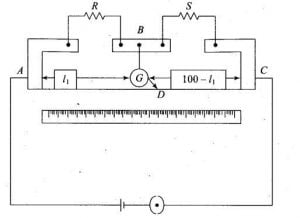
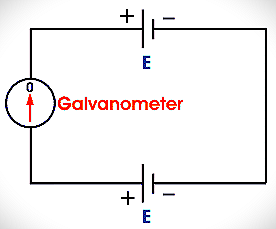
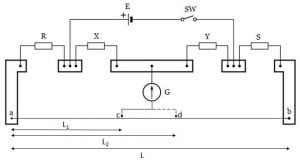
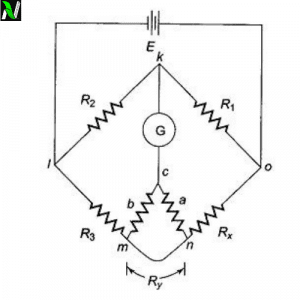
![Wheatstone bridge | working principle, construction and its derivation [class 12].](https://www.natureof3laws.co.in/storage/2021/06/wheatstone-bridge-300x240.jpg)

